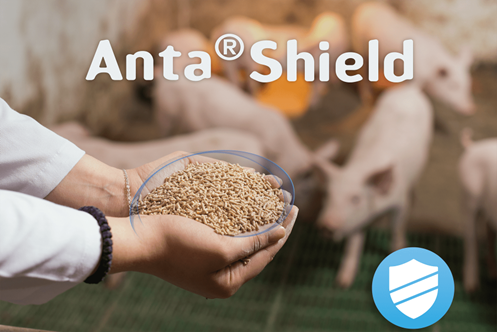Commercial note by Dr-eckel

Combating the spread of the African Swine Fever Virus is currently a top priority worldwide. The spread of the virus poses a serious challenge to pig production, with the threat of major losses. Biosecurity measures are designed to prevent the virus from entering the farm. But they must be comprehensive – and that includes transmission via feed.
African Swine Fever (ASF) has proven the biggest threat to the swine industry in recent years. Outbreaks and cases have been reported in five continents and 35 countries so far, and the virus is spreading further, costing billions of dollars for prevention and eradication measures. Prevention is key to control the spread of the disease. Biosecurity measures need to be comprehensive to ensure that there is no gap through which the virus can enter the farm. In most operations, common biosecurity measures, i.e. restriction of people movement, quarantine protocols for incoming animals, pest control and cleaning and disinfecting regimens are implemented and observed.
However, apart from the strict ban on swill feeding, other feed sources are often not considered, though the introduction of porcine epidemic diarrhoea virus (PEDV) into the United States in 2013 demonstrated that swine diseases can be both introduced and transmitted through feed. A recent risk analysis carried out by EFSA (2021) concluded that the virus can survive in some animal feed types for up to 30 days and can be transmitted via mash and pelleted compound feed as well as certain feed additives. This possibility of transmission via the feed constitutes a gap in the existing biosecurity measures that needs to be closed.
Restricting use of raw materials sourced from regions that are affected by African Swine Fever is recommended but may not always be feasible. The removal of African Swine Fever virus carried in feed therefore has a high significance for the industry and should be part of any risk analysis carried out in feed mills and farms. In fact, in their scientific opinion, the EFSA panel recommends “strict adherence to relevant decontamination and storage processes for all products moved from ASF-affected areas to unaffected areas” (EFSA Journal 2021, doi: 10.2903/j.efsa.2021.6558).
These relevant decontamination processes may include heating feed or ingredients to 70°C for 30 minutes. Holding feed and ingredients for a suitable amount of time would be another possibility to ensure save feed. But all these measures have their own drawbacks. This is why in recent years various feed additives have been studied for their potential to mitigate the transmission of swine virus via the feed. These additives include chemical products like formaldehyde and organic acids. However, formaldehyde is highly controversial due to worker safety concerns and application is limited in the EU. Are there more natural and sustainable options?
More info at: https://www.dr-eckel.de/en/asf-phytogenic-power-for-safe-feed/
